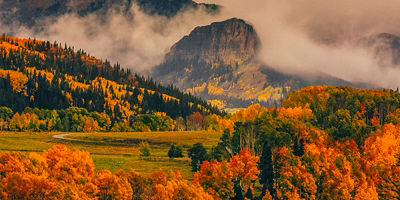
Invasive species are as bad as they sound. Non-native organisms can do serious damage to an ecosystem and its native wildlife, and can also negatively affect a visitor's experience. And it’s not a rare thing either—about half of the country’s national parks have reported issues with some type (or types) of invasive species. The National Park Service reported 1,500 populations of invasive animals as of 2016. Invasive plants cover 1.4 million acres of agency-managed land and water. A study found that more than 300 of the invasive animal species seriously threaten our parks.
So what can be done? The National Park Service is battling invasive species on multiple fronts. From feral hogs and frogs to extra-large pythons and quagga mussels, here are some of the most serious threats, the strategies for getting rid of them, and what you can do to prevent the spread of invasive species.
Grand Canyon National Park
Invader: Tamarisk
The problem: Tamarisk was introduced to the Southwest in the late 1920s to help battle erosion and stabilize riverbanks, but it spread rapidly and soon dominated the environment—crowding out native cottonwoods and willows. The trees grow in dense stands along rivers and streams and can reach 15 to 50 feet tall. A mature tamarisk can use up to 200 gallons of water per day, and over time tamarisk (also called saltcedar) changes the salinity of the soil on which it sits, which further repels native plants.
It gets worse: The seeds of the tamarisk are low in nutrients, so they’re not sufficient to sustain native species, like birds, and the rampant spread of tamarisk has increased the risk of wildfire. The pervasive plant exists in the Grand Canyon as well as other parks, from Dinosaur National Monument to Arches National Park, and Canyonlands National Park to Glen Canyon National Recreation Area.
The plan: In the Grand Canyon alone, 270,000 tamarisk trees have been removed (at last count, in 2009) in order to allow the natural vegetation to recover. Crews cut the trees down with chainsaws, bulldoze them, or use chemical controls. Other land managers in the Southwest introduced the tamarisk beetle, which feeds on tamarisk leaves, killing the trees. However, the beetle is also non-native, and it has spread faster and farther than expected, causing unintended consequences, like threatening the endangered southwestern willow flycatcher in Arizona.
Congaree National Park
Invader: Feral Hogs
The problem: Feral hogs aren’t just a national park problem, they run rampant in dozens of states (at least 42 of them) and their population is estimated at more than 6 million. The hogs have been here for hundreds of years, arriving in the 1500s as a food source for European settlers. According to the USDA the hogs cause about $2.5 billion in damage per year: plowing through crops, tearing up roads, spreading disease, contaminating water, and pushing out native species. This highly destructive species runs rampant at Congaree, where they threaten the park’s forest ecosystem and floodplain. Feral hogs create trail networks, root up the forest floor, reproduce quickly, eat almost anything, are incredibly adaptive, and are aggressive competitors with the park’s native animals like wild turkey and white-tailed deer.
The plan: The park is working on two fronts. Federal trappers hunt and kill the animals in an ongoing removal effort. But there’s no hope of completely eradicating them, so scientists are also planning strategies to reduce the impact of the feral hogs—adapting to the reality that they’re here to stay.






















